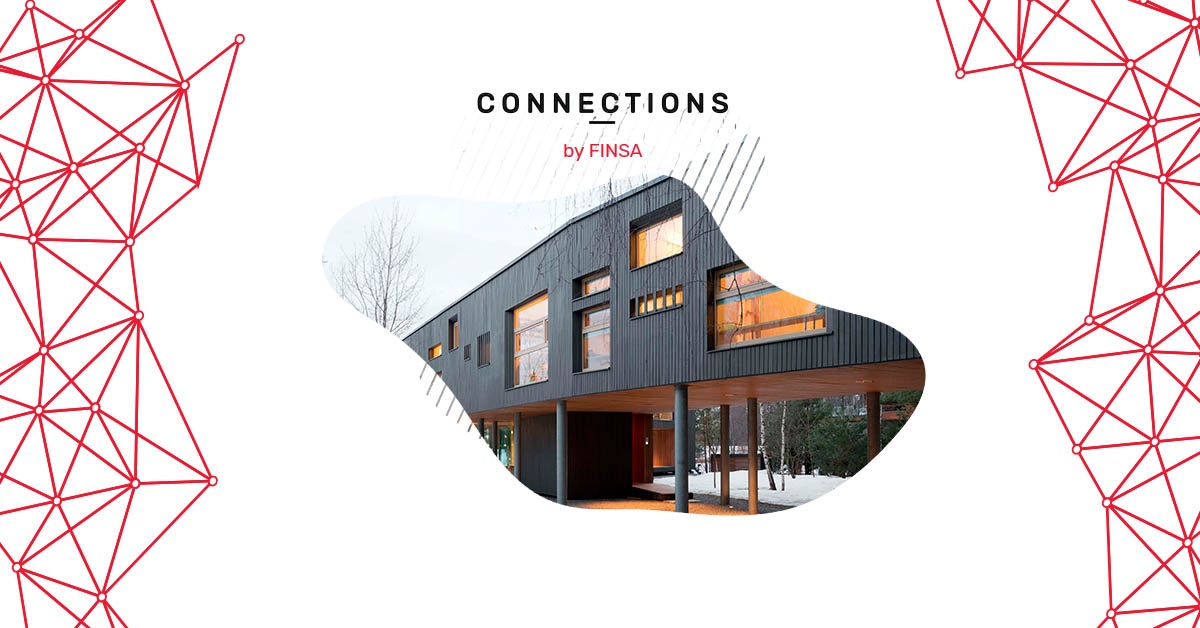Large cities all over the world are suffering from the same problem: homelessness. Innovative measures such as floating houses and rooftop neighbourhoods are attempting to address this growing problem. In recent years, another trend has gained momentum: the adaptive reuse of empty offices. In this report we will look at the context, the strategies being pursued in cities globally and examine the pros and cons.

Context: emptying city centres
The rise of teleworking after the pandemic and the move of large companies to the suburbs are the main factors behind the progressive emptying of city centres and the consequent vacancy of office space. What if we could revitalise city centres by reusing the workplace that has fallen into disuse?
In the city of Madrid alone, 1 in 5 premises have been converted into housing in recent years. This is a metric that has grown by 22% since 2020, according to the network of independent real estate agents The Simple Rent. Following this measure, the Spanish capital will offer 150,000 habitable homes in the centre.

On the other side of the ocean, in San Francisco, the detection of the inactivity of 30% of office space led the government to approve specific legislation in February 2023 to gain 11,000 housing units. Not only that, it also envisages an ecosystem of new commercial, entertainment and cultural applications to revitalise the neighbourhood.
9 multidisciplinary strategies
We focus on San Francisco because it serves as an example of an ambitious urban plan that goes beyond simply rehabilitating and repurposing a building. The strategic plan to revitalise the city centre focuses on nine axes from a multidisciplinary perspective:
- Ensuring the cleanliness and safety of the area through the implementation of the Healthy Streets programme.
- Attracting and retaining a diverse range of industries and workers with tax abatement, business counselling and information campaigns on the associated benefits.
- Make it easier to start a business and grow it through simplification of processes and the promotion of pop-up spaces.
- Plan to improve the working population through training programmes and the provision of housing to facilitate settlement in the area.
- Articulate an environment of art, culture and nightlife in the public space with a calendar of events and activations that showcase local talent.
- Adaptation of squares, neighbourhoods, pavements and parks to highlight their accessibility.
- Investment in sustainable transport and connections such as a cycle lane or more pavements.
- Marketing campaigns that attract visitors and potential residents.
- Providing flexibility and new uses for buildings: this includes the adaptation of offices as housing and a plan for the use of commercial areas, combined with other applications.

Other examples of adaptive reuse of empty offices
San Francisco’s proposed programme mirrors the one launched by Calgary (Canada) in 2021. There, to date, 10 hectares of office space (the equivalent of more than 14 football fields) have been converted into housing and are being considered for redevelopment into hotels and schools.
Other cities in the United States, where this trend of adaptive reuse of empty offices has exploded, have brought to the table initiatives that are more focused on concrete, short-term actions. Chicago and New York are two of the most paradigmatic cases so far in 2023.
Chicago has developed a competition to select three projects to subsidise the redevelopment of 46 hectares of vacant commercial space. It will transform them into mixed-income flats, intended as a model of affordable housing for residents with lower purchasing power.
New York, meanwhile, issued eleven recommendations to amend laws and requirements to encourage the conversion of office space into housing. In this way, it eliminates the bureaucracy that slows down the process of finding a solution to the country’s housing problem. In addition, the document offers architectural, financial and employment advice that serves as a guide for any locality interested in these urban development proposals.

Considerations for converting offices into dwellings
This solution to the housing problem has advantages, but also some disadvantages. The first thing to bear in mind is that not all former workplaces are suitable for reuse. In fact, a recent Moody’s analysis found that only 3% of properties would be suitable for residential conversion. This is compounded by the tax rewards of office space in cities such as Seoul and Paris, according to the Brookings study.
The regulatory framework of the building, which varies depending on where it is located, and the morphology of office buildings (lighting, absence of kitchens, minimum surface areas, etc.) are other factors that hinder their conversion, although strategies can be devised to reuse them, as architect Robert Fuller points out. He suggests using the less habitable areas for communal spaces across different floors, and argues that older office buildings are a cheaper option than building from scratch.

Undoubtedly, the conversion from office to residential is a feasible measure in some circumstances. If it also has a programme that is committed to revitalising city centres beyond the merely urbanistic, success is assured.
What do you think of the adaptive reuse of offices? Have you developed a project of this type? Share it on social networks using the hashtag #ConnectionsByFinsa.




